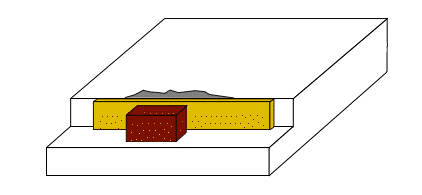How To Patch Cracks in Concrete Floors & Walks
As tough as concrete is, it can easily crack or chip due to temperature changes and because it naturally absorbs moisture. And what starts out as a little hairline crack can quickly escalate to serious, costly damage because water and debris is able to penetrate deeper into the concrete. Fortunately, these simple techniques can help you repair damage before things get expensive, protect your investment and prolong the life of your concrete structures. Note that these repairs are not appropriate for structural concrete, such as perimeter foundations.
Prepare the repair surface
Before you start patching damaged concrete, make sure the area to be repaired is clean and dry. Remove all loose concrete and debris with a stiff wire brush. If the crack is larger than 1/2", use a chisel and enlarge the base of the crack (see Fig. 1). Then, wash away any dirt and foreign materials, such as the oils and greases commonly found on driveways, with a concrete cleaning solution. Finally, let the area dry thoroughly.

Applying the patch
Masonry crack filler is available in caulking cartridges, which are ideal for getting deep into small cracks. Simply load the cartridge into your caulking gun, squirt the filler into the crack, and smooth the patch with a small putty knife.
Vinyl-reinforced patching compound is better suited to larger cracks. Mix according to the manufacturer's directions, then, using a pointed trowel, fill the crack with the compound and tamp it to get any air bubbles out before you smooth it and admire your handiwork. The larger the crack, the more important tamping is because trapped air bubbles will weaken your patch.
Variation: Using forms to repair edges and corners
Chips and cracks in concrete steps, stairways and walkways can be dangerous as well as unsightly. To fix a the corner of a stairway or the edge of a walkway, you might need to build a wooden form to support the patch as it dries to full hardness.
For a small repair on a step or stairway, a straight board can be supported by a heavy brick (see Fig. 2). Just make sure the board doesn't move throughout the drying period.

For a walkway repair, you might have to dig a small trench parallel to the walkway, then place your board next to the area to be repaired. Drive a few stakes in the ground to support the board, or, if the repair area is small enough, stabilize the board by loosely refilling the trench around it.





